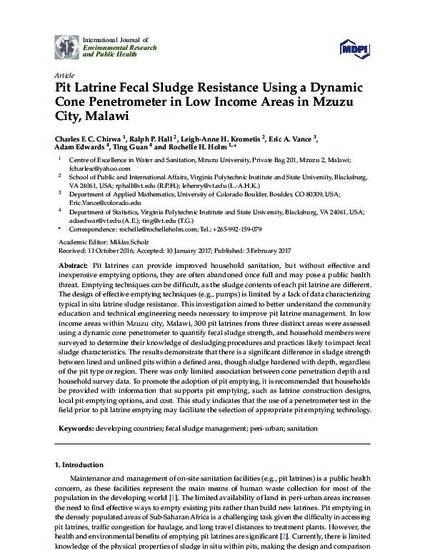
Pit latrines can provide improved household sanitation, but without effective and inexpensive emptying options, they are often abandoned once full and may pose a public health threat. Emptying techniques can be difficult, as the sludge contents of each pit latrine are different. The design of effective emptying techniques (e.g., pumps) is limited by a lack of data characterizing typical in situ latrine sludge resistance. This investigation aimed to better understand the community education and technical engineering needs necessary to improve pit latrine management. In low income areas within Mzuzu city, Malawi, 300 pit latrines from three distinct areas were assessed using a dynamic cone penetrometer to quantify fecal sludge strength, and household members were surveyed to determine their knowledge of desludging procedures and practices likely to impact fecal sludge characteristics. The results demonstrate that there is a significant difference in sludge strength between lined and unlined pits within a defined area, though sludge hardened with depth, regardless of the pit type or region. There was only limited association between cone penetration depth and household survey data. To promote the adoption of pit emptying, it is recommended that households be provided with information that supports pit emptying, such as latrine construction designs, local pit emptying options, and cost. This study indicates that the use of a penetrometer test in the field prior to pit latrine emptying may facilitate the selection of appropriate pit emptying technology.
Available at: http://works.bepress.com/rochelle-holm/29/
